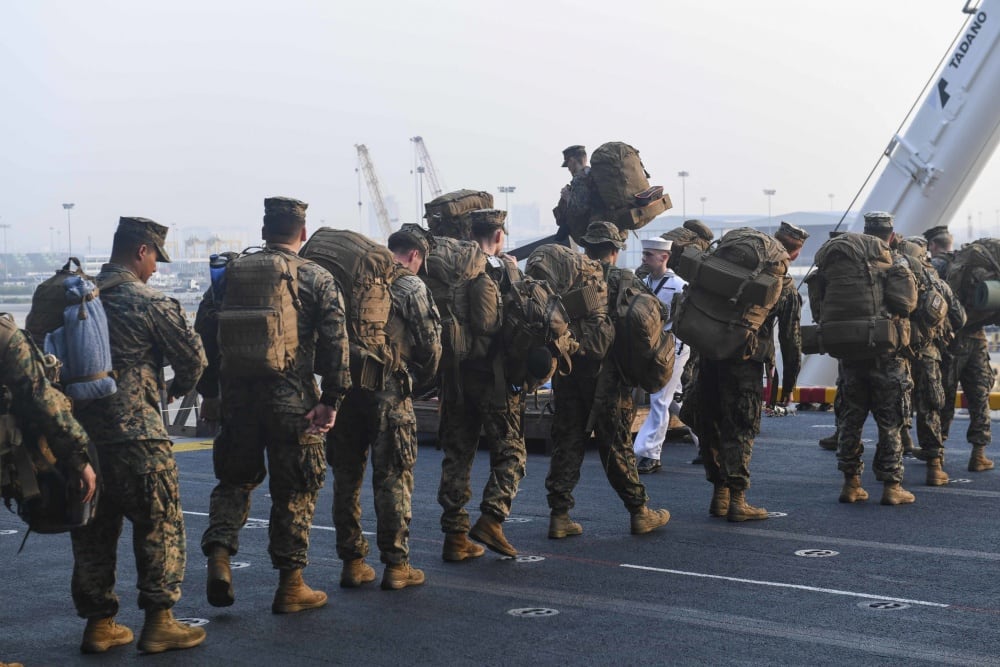WASHINGTON — The Senate Armed Services Committee wants to give the Air Force more F-35 fighter jets and drones, but the panel’s version of the 2021 defense policy bill leaves many questions open about the future of the service’s legacy aircraft.
In the Air Force’s fiscal 2021 budget request, the service proposed retiring a number of its B-1 bombers, A-10 Warthog attack planes, RQ-4 Global Hawk surveillance drones, KC-135 and KC-10 tankers, and C-130H planes. Air Force leaders said the reductions were necessary to free up money needed for key investments in future technology areas like space and joint all-domain command and control.
RELATED

However, the proposed version of the FY21 National Defense Authorization Act passed by the Senate Armed Services Committee on June 10 puts some limits on those proposed cuts. Instead of mandating the Air Force to retain a certain number of specific types of aircraft, SASC’s defense bill “establishes a minimum number of aircraft for each major mission area … and prohibits the divestment of aircraft until the minima are reached to ensure that Air Force can meet [National Defense Strategy] and combatant command requirements,” SASC said in a summary of the bill.
But with only a summary of the bill available, it’s unclear how that compares with the Air Force’s planned inventory reductions and whether any retirements will be permitted at all.
According to a committee staffer, the numbers proposed by SASC include a “primary mission aircraft inventory” of 1,182 fighters, 190 drones, 92 bombers, 412 tankers, 230 tactical airlift platforms, 235 strategic airlift platforms, 84 intelligence, surveillance and reconnaissance aircraft, and 106 combat search-and-rescue aircraft.
Specifically, the bill blocks the retirement of three A-10 Warthog squadrons, limits F-15C divestment, and delays the retirements of KC-10 and KC-135 tankers until after the KC-46’s technical challenges are resolved. The Air Force had planned to retire 13 KC-135s and 16 KC-10s in FY21.
The summary of the bill makes it clear the SASC is concerned that the Air Force’s plan to trade existing aircraft for future capabilities could lead to a drop in near-term readiness as well as an scenario where legacy aircraft are never actually replaced.
The bill “requires the Secretary of Defense to submit an annual aviation procurement plan across all services,” the summary stated. It includes language that cements the Air Force’s aspiration to field 386 combat squadrons as a requirement, although one staffer clarified that the provision is more a goal than a mandate, and that there is no timeline associated with it.
SASC’s legislation is far from set in stone. The bill will move to the Senate floor for debate, but its House counterpart is working on its own version of the defense authorization bill, and both chambers will have to agree on a final bill.
Where’s the money going?
The House and Senate Armed Services committees make funding recommendations, which are then used by congressional budgeteers in the appropriations committees to draw up the final funding bills. Nonetheless, SASC made a number of key funding authorizations that could mean major increases for certain aircraft programs.
- Unsurprisingly, it recommended a major increase for Lockheed Martin’s F-35 Joint Strike Fighter program, approving the purchase of 60 F-35A conventional-takeoff-and-landing models, 12 F-35B short-takeoff-and-vertical-landing variants, and 23 F-35C carrier-takeoff-and-landing aircraft. That’s a net increase of 16 aircraft: 12 F-35As, two F-35Bs and two F-35Cs.
- General Atomics was another major beneficiary of the legislation. SASC authorized $165 million for additional MQ-1 Predator drones for the Army and $170.6 million for MQ-9 Reaper drones for the Air Force, which will keep the production line going ahead of a replacement program.
- It adds an extra $128 million for additional XQ-58 Valkyrie drones from Kratos. The Valkyrie is a low-cost combat drone currently being tested by the Air Force as part of the Low Cost Attritable Aircraft Technology effort, which seeks a “loyal wingman” aircraft that can penetrate contested environments and take on more risk than manned planes. The committee also calls for an LCAAT operational test plan and utility evaluation.
- It fully funded the Air Force’s KC-46 tanker program and B-21 bomber program, according to SASC Chairman Jim Inhofe, R-Okla.
- The bill also “increases funding for critical capabilities that will help the United States maintain air superiority in contested environments, including Systems of Systems Technology Integration Tool Chain for Heterogeneous Electronic Systems (STITCHES) and advanced air-to-air weapons”
Valerie Insinna is Defense News' air warfare reporter. She previously worked the Navy/congressional beats for Defense Daily, which followed almost three years as a staff writer for National Defense Magazine. Prior to that, she worked as an editorial assistant for the Tokyo Shimbun’s Washington bureau.








